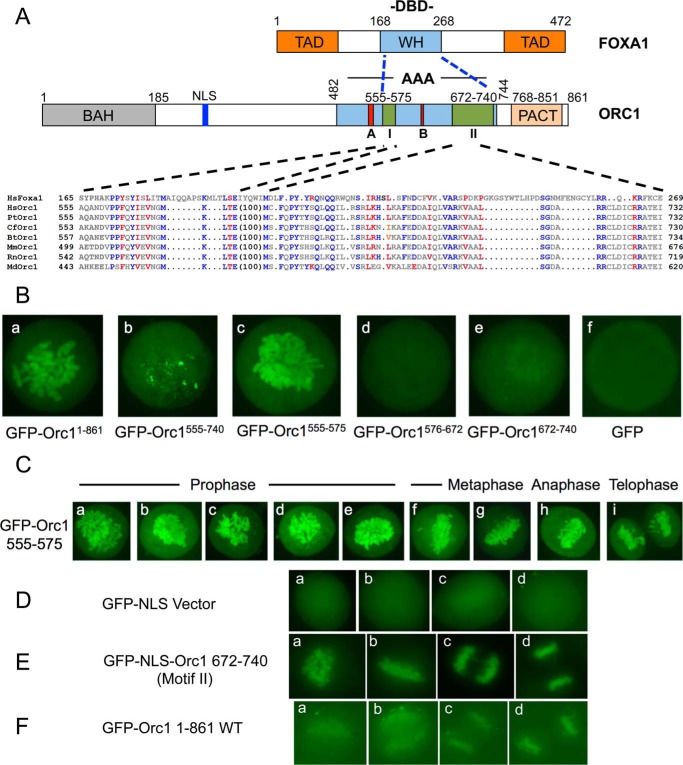FIGURE 4.
Orc1 domains associate with mitotic chromosomes. A, domain structures of human FOXA1 and Orc1 proteins. Sequence alignment of FOXA1 DBD and Orc1 is shown. TAD, transactivation domain; WH, winged helix domain; A, Walker A motif; B, Walker B motif; I, motif I; II, motif II. Hs, Homo sapiens (human); Pan troglodytes (chimpanzee); Cf, Canis familiaris (dog); Bt, Bos taurus (bovine); Mm, Mus musculus (mouse); Rt, Rattus norvegicus (rat); Md, Monodelphis domestica (opossum) (100). In Orc1, sequences mean Orc1 protein sequences have 100 amino acid intervening residues. It suggests that Orc1 contains two motifs separated by 100 amino acid residues. Blue residues represent identity between FOXA1 and Orc1, and red residues represent similarity. B, localization of GFP-Orc1 or different GFP-NLS-Orc1 fragments in mitotic U2OS cells as indicated. U2OS cells were transiently transfected, and live cell images were captured. Each of the constructs in panels b–f have an NLS present. C, localization of GFP-NLS-Orc1(555–575) (motif I) during mitosis using live cell imaging of transfected U2OS cells. D, localization of GFP-NLS in methanol-fixed U2OS cells. Following transfections are with a plasmid expressing the protein: E same as D, except GFP-NLS-Orc1(672–740) (motif II). F same as D except GFP-Orc1(1–861).

